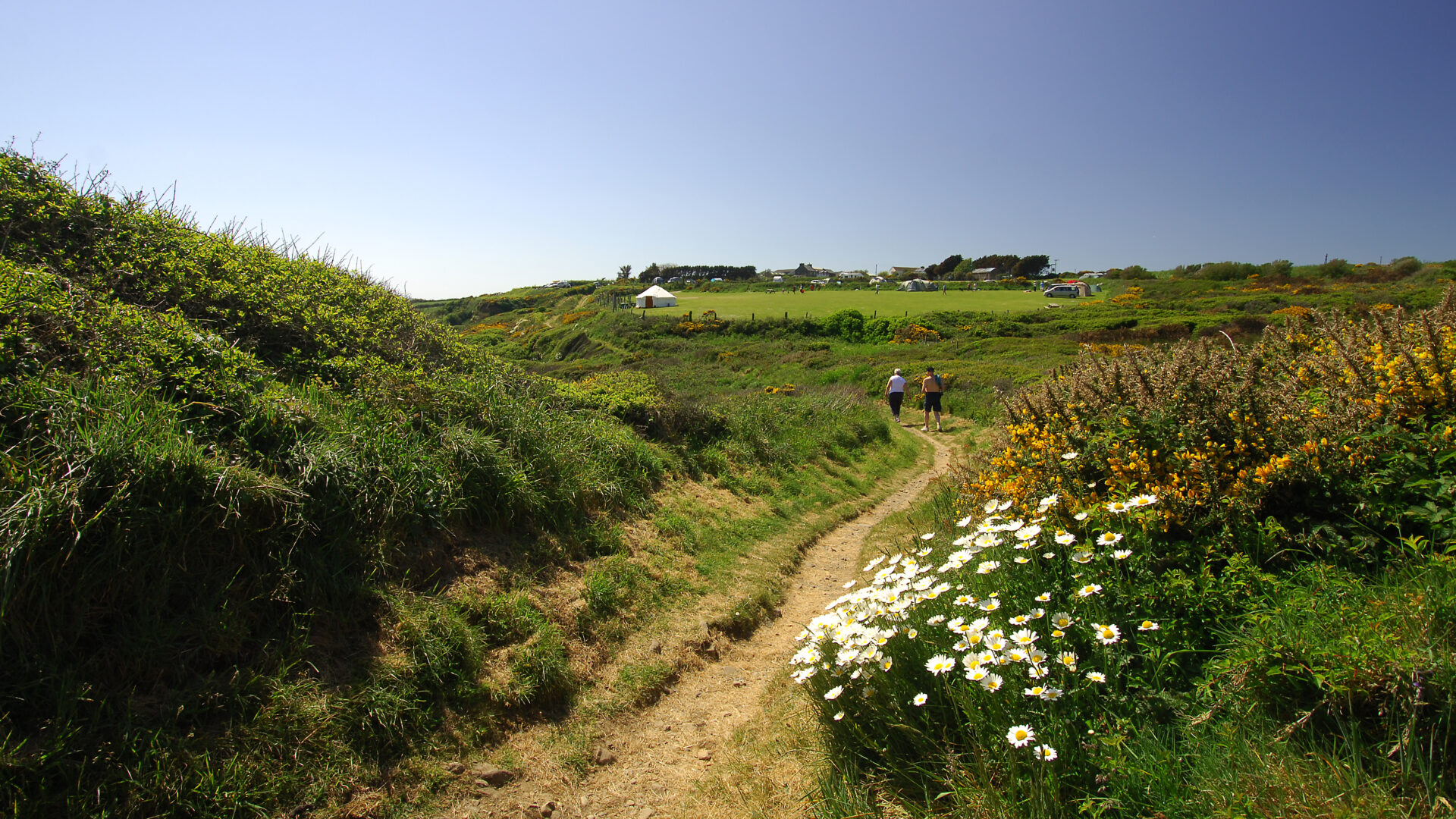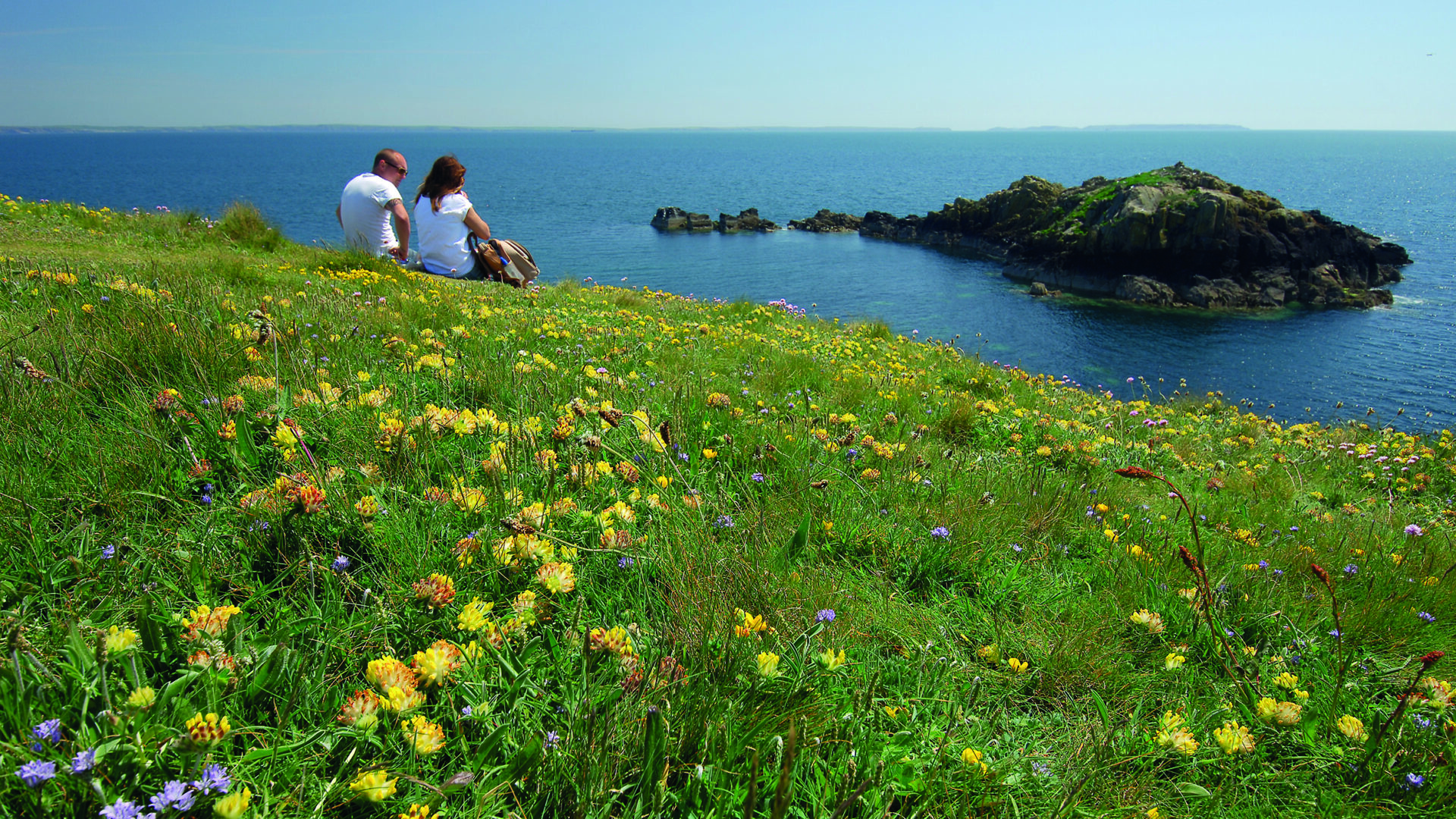
Discover: Pembrokeshire Coast Path
-
Date posted: 29/04/2024
-
Time to read: 10 minutes
As the world grapples with an alarming decline in pollinators that are critical to our ecosystems and food security, the Pembrokeshire Coast Path has taken on a vital new role in environmental conservation.
Regarded as one of the jewels in Pembrokeshire’s crown, the 186-mile Coast Path has established itself as a place that offers scenic exercise opportunities, an array of incredible wildlife and a chance to experience the great outdoors at its very finest. However, people aren’t the only visitors to this spectacular National Trail. Among the many plants and animals that have made their homes along the wind-beaten banks and rocky cliff edges are many of our native wild pollinators. As well as forming a fundamental component of our biodiversity, our lives are linked inextricably to theirs, as they are responsible for 90% of crop pollination. Over the last 80 years, the loss of around 97% of British hay meadow and species-rich grasslands has been bad news for insect populations. Half of our 27 types of bumblebees are in decline, and three have already become extinct.
In August 2019, the People, Paths and Pollinators project set out to reverse this trend with new land management techniques to provide a much-needed boost for biodiversity along the Coast Path. While the three-year pilot was confined to a section of the Coast Path between Newgale and Abereiddi, lessons have been learned that are now being applied to other parts of the path – and further afield.
To the untrained eye, many of these changes will be barely perceptible, or else misinterpreted as imperfections in maintenance. They serve an important function, though – and knowing what to look out for can offer an intriguing insight into some of the ways in which the National Park Authority is transforming our world class National Trail into a haven for pollinators and creating a blueprint for future conservation efforts.

Scalloped scrub edges
Thick ‘walls’ of gorse, blackthorn and hawthorn can form on either side of the path. This can create a wind tunnel effect, which makes life a lot harder for insects and plants. Scalloping the edges of the path breaks up the edge of the wind tunnel, creating sheltered pockets that allow wildlife to thrive.
Scrub clearance
Scrub ‘walls’ that have formed into tight corridors of less than 1.5m wide not only create a wind tunnel effect, but also block sunlight from reaching the path. Clearing the scrub and widening the path by at least 2 metres not only improves conditions for insects and increase biodiversity, but also provides easier access for human visitors and much better views!
Bracken clearance
Similarly, when bracken forms a dense layer along the Coast Path, it blocks light reaching the ground, creates a wind tunnel and prevents smaller flowers from growing and thriving. Cutting extra widths of bracken weakens it, setting the stage for other plants to grow along the path edges in years to come.

Bee banks
Bee banks are vertical faces of bare soil, where bees and other insects can dig their nest burrows. They provide shelter and the perfect nesting site for several different species of bumblebee, including solitary bees – who are often more efficient pollinators than honeybees. Bee banks can be formed as part of Coast Path realignment work, where the path has been bladed and a bare vertical face has been created, or by strimming grass back to bare soil.
Anthills
Small but mighty, anthills create individual micro-climates along the Coast Path. Each mound has small differences in soil nutrients, temperature, humidity, drainage and sunlight, which allows for a greater diversity of grasses, herbs and other flowering plants, such as thyme and birds-foot trefoil, to thrive. Clearing vegetation from around the anthills maximises the amount of sunlight they receive and prevents them from growing cold and being abandoned by the ants – as well as other creatures that rely on these wonderful little habitats.
Wet areas and streams
As well as providing a vital source of water for insects, wet areas and streams provide perfect nesting sites. Clearing the areas around streams and flushes that cross the path provides much easier access for our pollinators.

Since the beginning of the project, Pollinator Plans based on the findings of this project have been implemented in several inland sites managed by the National Park Authority, such as Porthgain, Oriel y Parc, St Davids Airfield and Broad Haven North car park – leading to an improvement in the diversity of plant species.
The entire length of Coast Path that’s maintained by National Park Authority Wardens has also been surveyed, highlighting nearly 500 opportunities for improving this habitat for pollinators.
The work that’s been carried out so far includes:
- Creating approximately 500 metres of bee banks
- Creating nearly 6,000 metres of scalloped scrub edges to break up wind tunnels
- Clearing vegetation away from over 300 anthills
- Sowing 12kg of meadow seed on sites managed by the National Park Authority
- Improving the Coast Path between Cwm Felin and Trwyn Llwyd for both pollinators and people by removing the narrow fenced corridor and widening access.
Keep an eye open for some of these subtle yet significant transformations next time you take a walk in the National Park – as well as improving your experience, they are also ensuring a brighter future for our precious pollinators and the ecosystems they support!
